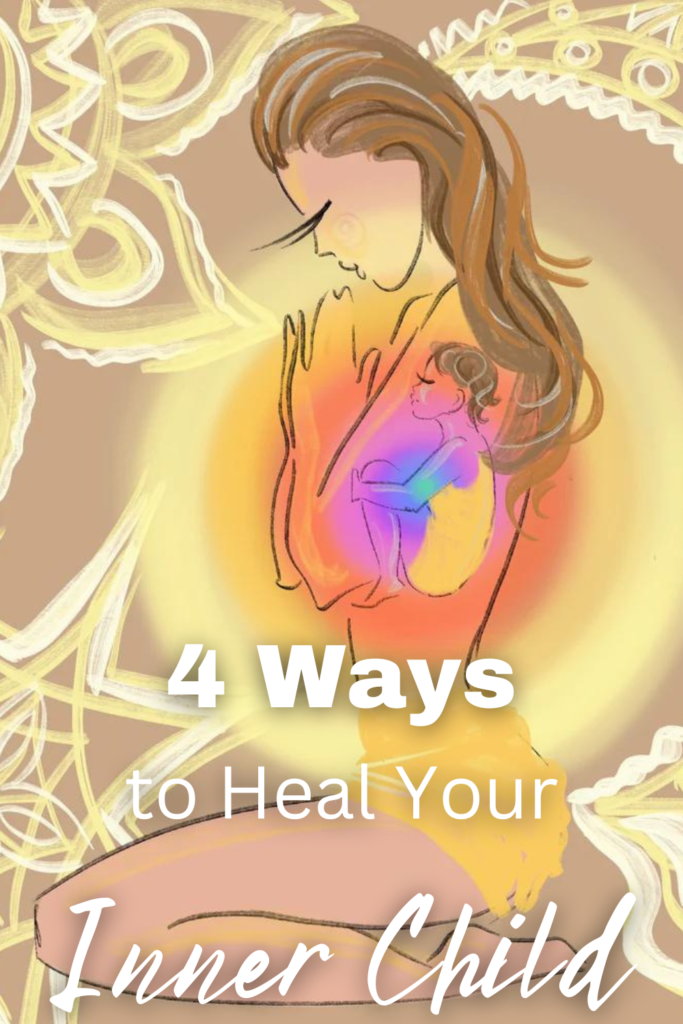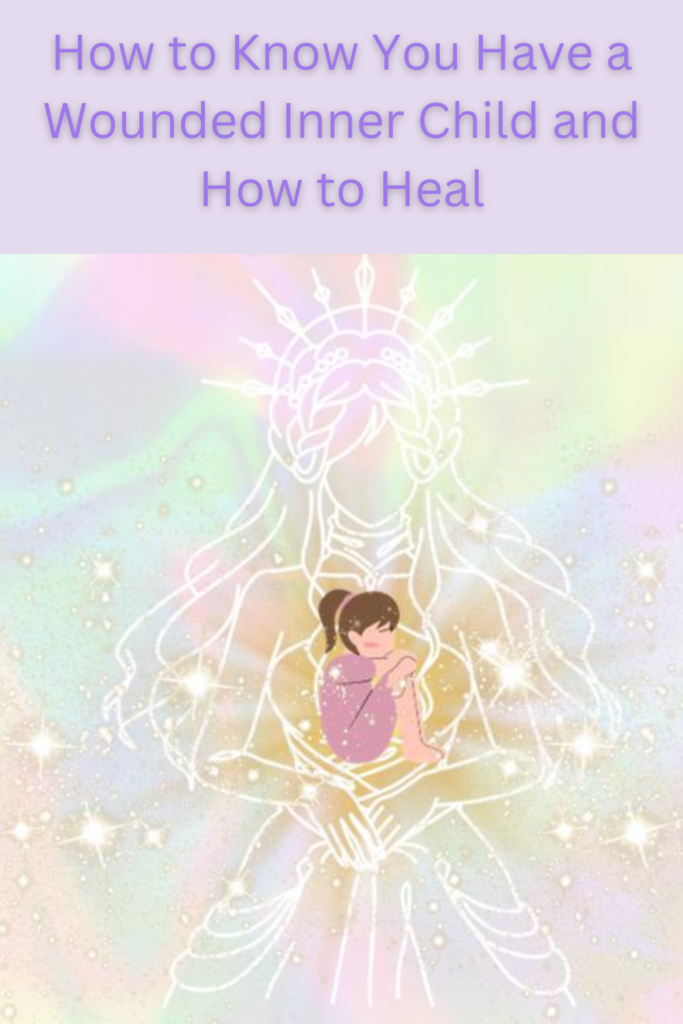This article may contain affiliate / compensated links. For full information, please see our disclaimer here.
Have you ever felt a tug deep within you, like a whisper from your past, guiding your emotions and behaviors in ways you can’t quite explain? Have you ever observed experiencing cycles in your life like being employed/unemployed and toxic relationship patterns? This mysterious force is the push and pull of your inner child, the youthful essence that resides within your psyche. It carries the innocence, curiosity, vulnerability and more often, the trauma of childhood. Do you know that regardless of age, our inner child remains an integral part of who we are? As a result, it unknowingly shapes our perceptions, relationships, and self-image.
In this article, we will explore the concept of the inner child, identifying signs of its wounds and offering pathways to healing. By exploring into the depths of our past experiences, we can discover hidden traumas and emotional scars that continue to influence our present-day lives. On the other hand, through the power of expressive writing and self-reflection, we can embark on a journey of self-discovery and transformation. This can provide a venue to reclaim the joy, creativity, and resilience of our inner child. So let us step into this journey together, as we learn to nurture and heal the wounded child within us.
What is the Inner Child
Your inner child is like the little version of you that lives inside your mind and heart (Gill, 2010). It represents the purity, innocence, and curiosity that you once embodied as a child, carrying forward into your adult life. This aspect of your being continues to harbor the capacity for joy in the simplest of experiences and maintains an innate sense of wonder towards the world. Despite the passage of time, your inner child persists, yearning for nurturing and acknowledgment (Cameron, 2015).
In this regard, embracing and understanding this dimension of yourself is fundamental for fostering a sense of vitality and inspiration (Gill, 2010). Much like an actual child, your inner child craves affection, recognition, and affirmation. By attuning to the needs and aspirations of your inner child, you create a pathway for healing and personal evolution. Honoring and validating your inner child’s presence enables you to cultivate authenticity and completeness, facilitating a deeper engagement with the present moment (Cameron, 2015).
7 Signs You Have a Wounded Inner Child
Sometimes our inner child can carry wounds from the past that affect how we feel and behave today. Here are some signs that your inner child might need healing:
1. Feeling like something is wrong with you deep down
Experiencing a pervasive sense of inadequacy or self-doubt may indicate unresolved wounds within your inner child. For instance, growing up, you were often compared unfavorably to your siblings by your parents. This could lead you to internalize a belief that something is inherently wrong with you, which now manifests as a persistent feeling of inadequacy in various aspects of your life.
2. Getting anxious about trying new things
Feeling anxious or apprehensive when faced with new experiences could be a sign that your inner child is seeking reassurance and safety. For example, as a child, you were frequently criticized for making mistakes, causing you to develop a fear of failure and an aversion to trying new things. Now, as an adult, you experience anxiety and hesitation whenever you’re presented with unfamiliar situations or opportunities.
3. Struggling to stand up for yourself
Difficulty asserting your needs or asserting boundaries may stem from unhealed childhood wounds that affect your sense of self-worth. To illustrate, during your formative years, you witnessed one of your parents being consistently passive or submissive in the face of conflict. This may instill in you a pattern of behavior where you struggle to stand up for yourself in relationships and professional settings.
4. Feeling guilty or unworthy
Persistent feelings of guilt or unworthiness may point to unresolved emotional trauma carried by your inner child. As such, growing up in a highly critical or emotionally neglectful environment, you internalized feelings of shame and unworthiness. This may continue to plague you in adulthood, leading to persistent feelings of guilt and self-doubt even in situations where you’ve done nothing wrong.
5. Having trouble expressing emotions or setting boundaries
Challenges in expressing emotions or setting healthy boundaries might suggest that your inner child is in need of healing and nurturing. That is, if as a child, your emotions were often dismissed or invalidated by caregivers. This may cause you to suppress your feelings and avoid confrontation. Now, as an adult, you find it challenging to express your emotions openly or assert healthy boundaries in relationships.
6. Seeking validation from others
Seeking external validation for your worth and identity may indicate unmet emotional needs from childhood that your inner child still seeks to fulfill. To show you what I mean, throughout your childhood, you received conditional love and approval from your caregivers. This may lead you to seek constant validation and approval from others as an adult, affecting your self-esteem and sense of identity.
7. Struggling with addictions or compulsions
Struggling with addictions or compulsive behaviors may be a manifestation of unaddressed emotional pain and trauma carried by your inner child. Case in point, growing up in a household where addiction was prevalent, you developed maladaptive coping mechanisms to deal with emotional pain or stress. This may lead to struggles with addiction or compulsive behaviors in adulthood as a way to numb unresolved inner turmoil.
Exploring Childhood Trauma
Many of these wounds come from experiences in childhood that were hurtful or traumatic. Whether it was feeling unloved, mistreated, or misunderstood, these experiences can leave lasting scars. Sometimes, we don’t even realize how deeply these wounds affect us until we start to explore them.
Childhood trauma casts a long shadow over our lives, influencing our beliefs, behaviors, and relationships. From neglect and abuse to household dysfunction, adverse childhood experiences can leave deep wounds that persist into adulthood. The groundbreaking Adverse Childhood Experiences (ACE) Study by Felitti et al. (1998) illuminated the far-reaching consequences of childhood trauma, linking it to a myriad of health issues and psychological challenges in later life. By acknowledging the impact of childhood trauma and processing thoughts and feelings through writing, we take the first step towards healing. Check my article on How to Process Your Thoughts and Feelings through Writing to learn more.
How Your Wounded Inner Child Affects You Now
Our wounded inner child can show up in various ways, often without us even realizing it. They might cause us to struggle in relationships, seek validation from others, or engage in unhealthy behaviors. Recognizing these patterns is the first step toward healing.
4 Ways to Heal Your Inner Child
1. Processing Thoughts and Feelings Through Writing
One powerful way to heal your inner child is by processing your thoughts and feelings through writing. By putting pen to paper, you can uncover hidden emotions, gain clarity, and release pent-up pain. Here are five ways you can use expressive writing to heal:
- Reflect on your childhood: Take some time to write about your memories and experiences from childhood. Allow yourself to explore any emotions that come up.
- Write a letter to your inner child: Address your inner child directly, offering love, comfort, and reassurance. Let them know that you’re here to support and protect them.
- Write a letter from your inner child: Imagine what your inner child might want to say to you. Write a letter from their perspective, expressing their needs, fears, and desires.
- Share your pain: Find a trusted friend, therapist, or support group and share your writing with them. Talking about your experiences can help you feel understood and validated.
- Use affirmations: Write down loving and supportive affirmations to remind yourself of your worth and value. Repeat these affirmations regularly to reprogram your subconscious mind.
2. Resetting Your Nervous System
Chronic stress and trauma disrupt the delicate balance of our nervous system, triggering a cascade of physiological and psychological responses. The therapeutic power of expressive writing offers a pathway to nervous system reset and emotional regulation. Research by Pennebaker (1997) demonstrates the cathartic effects of expressive writing in reducing stress, improving immune function, and enhancing emotional well-being. By processing thoughts and feelings through writing, we release pent-up tension, reframe negative beliefs, and cultivate a sense of inner calm and resilience.
In addition, our nervous system plays a crucial role in how we respond to stress and trauma. Practices like deep breathing, meditation, and gentle movement can help soothe our nervous system and promote relaxation and healing.
3. Regulating Your Vagus Nerve
The vagus nerve is like a built-in calming system in our bodies. At the heart of our body’s stress response system lies the vagus nerve – a key regulator of emotional and physiological equilibrium. The Polyvagal Theory, pioneered by Stephen Porges (2011), highlights the role of the vagus nerve in promoting social engagement, emotional regulation, and resilience. Activities like mindfulness, yoga, and deep breathing can help activate the vagus nerve, promoting feelings of calm and safety.
In this regard, processing thoughts and feelings through writing activates the vagus nerve. It helps trigger a relaxation response and foster a sense of safety and connection. Through mindful writing practices, breathwork, and self-compassion exercises, we harness the healing power of the vagus nerve, restoring harmony to mind, body, and spirit.
4. Embracing Shadow Work
Carl Jung introduced the concept of the shadow – the hidden aspects of our psyche that we repress or deny. Shadow work invites us to confront our inner demons, embrace our darkness, and integrate all facets of our being. By processing thoughts and feelings through writing, we shine a light into the depths of our unconscious, uncovering buried traumas, fears, and insecurities. Through narrative exploration, dream analysis, and symbolic interpretation, we unravel the threads of our shadow, transforming fear into acceptance, and darkness into light.Shadow work involves facing the parts of ourselves that we’d rather avoid or deny. By shining a light on our shadows and embracing our vulnerabilities, we can heal old wounds and integrate all aspects of ourselves.
Indeed, healing your inner child is a journey of self-discovery and self-love. By acknowledging and honoring your inner child’s needs, you can begin to heal old wounds and reclaim your joy and vitality. Through the power of expressive writing and other healing practices, you can create a safe and nurturing space for your inner child to thrive. Remember, you are worthy of love and belonging, and you deserve to heal.
References
- Cameron, J. (2015). Reconnecting with the Inner Child: Empowering Clients with Trauma Histories. Journal of Counseling & Development, 93(3), 305-312.
- Felitti, V. J., et al. (1998). Relationship of Childhood Abuse and Household Dysfunction to Many of the Leading Causes of Death in Adults: The Adverse Childhood Experiences (ACE) Study. American Journal of Preventive Medicine, 14(4), 245-258.
- Gill, M. (2010). The Inner Child: What It Is, How to Recognize It, and What to Do About It. Psychoanalytic Social Work, 17(2), 91-112.
- Pennebaker, J. W. (1997). Writing about emotional experiences as a therapeutic process. Psychological Science, 8(3), 162-166.
- Porges, S. W. (2011). The Polyvagal Theory: Neurophysiological Foundations of Emotions, Attachment, Communication, and Self-regulation. Norton & Company.
If you find this article helpful, pin it!
Do you know that you, too, can earn while sharing your life story through writing on your blog? Visit my article How to Make Money by Sharing Your Story for your reference.
POPULAR POSTS





Comments